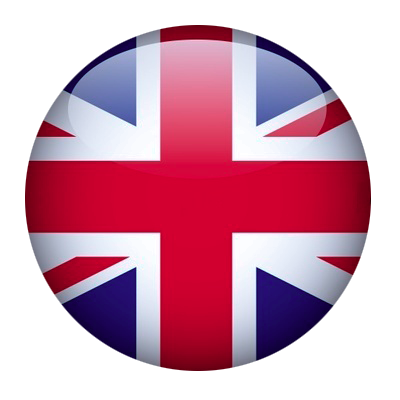over 10 years ago

Here at Trp Recruitment we recruit internationally across the fashion retail industry, utilising our extensive industry experience to find our clients and candidates their perfect match. We place our retail candidates in jobs in all types of retail environments, and at all levels, from graduate through to board-level roles.
When looking for a new role or applying for a job, it's important to understand the job itself and the responsibilities involved. Of course the role responsibilities will differ between companies but the below job descriptions give a key outline of what you can expect from working in each position.
Area Manager
The primary job function of the area manager is to manage and assume overall responsibility for the success of their stores by directing all operational aspects of each store and driving sales whilst minimizing costs.
They are responsible for ensuring that store managers and their staff keep stores to the highest possible standards, being well organised and properly merchandised at all times; and that all policies, procedures, and controls are followed. This will also include stock control to ensure store shrink is within company guidelines so as to protect company property and assets. The difficulty is that an area manager's time has to be split between a number of stores and the managers of these stores, who may require different levels of support and time.
Store Manager
- Stock control and stock levels
- Store budgeting.
- Staff Recruitment
- Recommendation or implementation of store procedures and policies.
Managers may also oversee the refitting or opening of a store, plan store layouts and design displays, decide selling strategies, and in some cases, represent the store in negotiations with manufacturers.
A good manager, will work with their team, organising their time so that everyone is working together to meet the store KPI's (Key Performance Indicators). KPI's are normally based on the achievement of sales, costs, shrinkage/waste and stock availability.
Buyer
The role of the Buyer can be extensive, including pricing, merchandising and promotional functions. A good Buyer needs, effectively, to assimilate large volumes of information, be highly competent in the mathematical appraisal of suppliers' terms and performance indicators, and also be an effective communicator and negotiator.
Buying within the larger retail organisations is organized into product categories such as men's outerwear, men's tailoring, ladies' tailoring etc. A retailer must also decide how much of the buying function is undertaken internally and how much to rely on outside agencies.
1. Product Development
When a new product is needed; requiring information, setting product specifications, evaluating sources of supply and establishing an order routine, e.g. high fashion.
2. Repeat Buying
A routine repurchase that may have been done numerous times before and does not need further research e.g. socks.
3. Continuity Buying
When the old product is reassessed, for example, the product is the same but the colour, size etc. may be slightly changed, e.g. tailoring, men's trousers.
Once this has been established, it has to be decided which supplier/s should be used. Decisions on choosing a supplier should be based on past experience, marketing reputation of the supplier, price in comparison to competitors, ability of the supplier to cope with expected volume, flexibility in the production, design and delivery and availability to develop and produce new products.
Merchandiser
Merchandising is about planning and developing a strategy to enable a company to sell a range of products that delivers sales and profit targets. A Merchandiser will work closely with a Buyer to ensure the product that's bought will enable them to achieve the sales plan.
The objective of the merchandising management team is to get the correct balance between the expectations of the customer and the objectives of the company's financial strategy.
A merchandising role involves the following processes:
- Analysing past sales figures/trends to anticipate future product needs.
- Devising a merchandise plan using the above techniques.
- Relaying the merchandise plan to the buyer who, in turn, can decide on what products, styles, colours etc to purchase and from which suppliers, at what price.
- Devising a contract for the suppliers including quality control, accuracy and flexibility. This is done throughout the season.
- Allocating certain amounts of stock, to each outlet, throughout the season. Retailers are now trying to minimise stock holdings and commitment to allow for maximum flexibility.
- Once the products are all distributed and put on sale, the Merchandiser can monitor stock movement, consider markdowns, inter-branch transfers, promotions or clear outs etc.
Account Manager
An account manager's job is centred on product development and it is their responsibility to ensure that any changes or alterations to the product reflect the retailer's brand as well as the trends of the season.
The general duties of an account manager include costing products, researching the market, negotiating prices and deliveries and briefing designers on the requirements of the customer. In addition to these tasks, an account manager is expected to have a good level of commercial awareness gained through competitive shop visits and keeping up to date with reading material, for example trade press, to develop the business.
Garment Technologist
Garment technologists and textile technologists carry out a range of technical, investigative and quality control work on all clothing and textiles, ensuring that products perform to specifications. They work on the development of products normally within a fashion supplier or fashion retailer head office, improve production efficiency and quality, and liaise with those involved in the production process.
Clothing technologists are involved in all aspects of garment construction and are expected to keep up to date with technical innovations. The selection of materials they work with is wide, including natural and synthetic textiles - leather, fur, metals and plastics. Tasks typically involve liaising with designers, adapting designs to suit production methods, sourcing fabrics and accessories, undertaking quality evaluations of materials and responding to product queries, including complaints, from wholesalers and customers.
Fashion Designer
Fashion designers work on the design of a clothing range. While many are generalist, working across a wide field, some fashion designers may focus completely on a specialist area, such as sportswear, childrenswear, womenswear, menswear or accessories.
Tasks depend on the market the fashion designer is producing for, but core responsibilities include creating/visualising an idea and making a sketch by hand or using computer aided design, keeping up to date with emerging fashion trends, liaising closely with sales, buying and production teams to ensure the item complements other products, negotiating with customers and suppliers and overseeing production.
Graphic Designer
A graphic designer produces visual solutions to communicate messages for their clients. Most work is two-dimensional and used within a range of media, including advertising campaigns, book covers, magazines, posters, corporate communications and websites. Some graphic designers work on three-dimensional designs, such as product packaging, exhibitions and displays. Working to a brief agreed with the client or account manager, a graphic designer will develop creative ideas and concepts, choosing the appropriate media and style to meet the objectives of the client.
Graphic designers often have to be proactive in presenting or 'pitching' their ideas and graphic designs to prospective customers, whether self-employed, working freelance or employed within a business.
Pattern Cutter
A pattern cutter's job is to draw and cut out sets of patterns for specified ranges of garment sizes as well as grading (increasing or decreasing dimensions) a master pattern for each size within a set. Naturally as a pattern cutter you will have excellent technical knowledge and skill. The senior pattern cutter supervises and coordinates the activities of workers engaged in marking, reproducing, and assembling paper garment patterns for use by manufacturers. They will also observe operations to verify that pattern parts are marked for fabric weave lines, coded to specifications, reproduced clearly, and assembled in specified order. The senior pattern cutter will also modify new patterns, using a superb knowledge of mathematics and pattern cutting principles. They will also determine layout for various pattern sizes to prevent waste and estimate material yardage required as well as training new pattern cutters to mark, reproduce, and assemble patterns.

